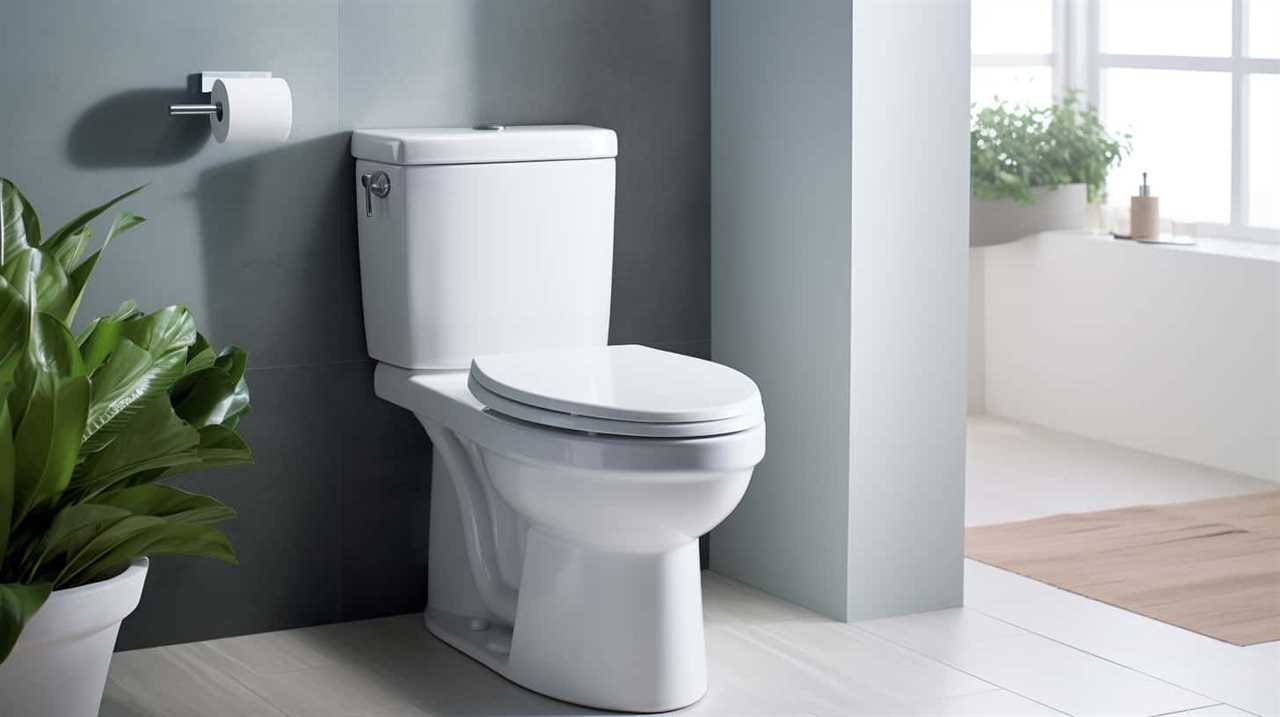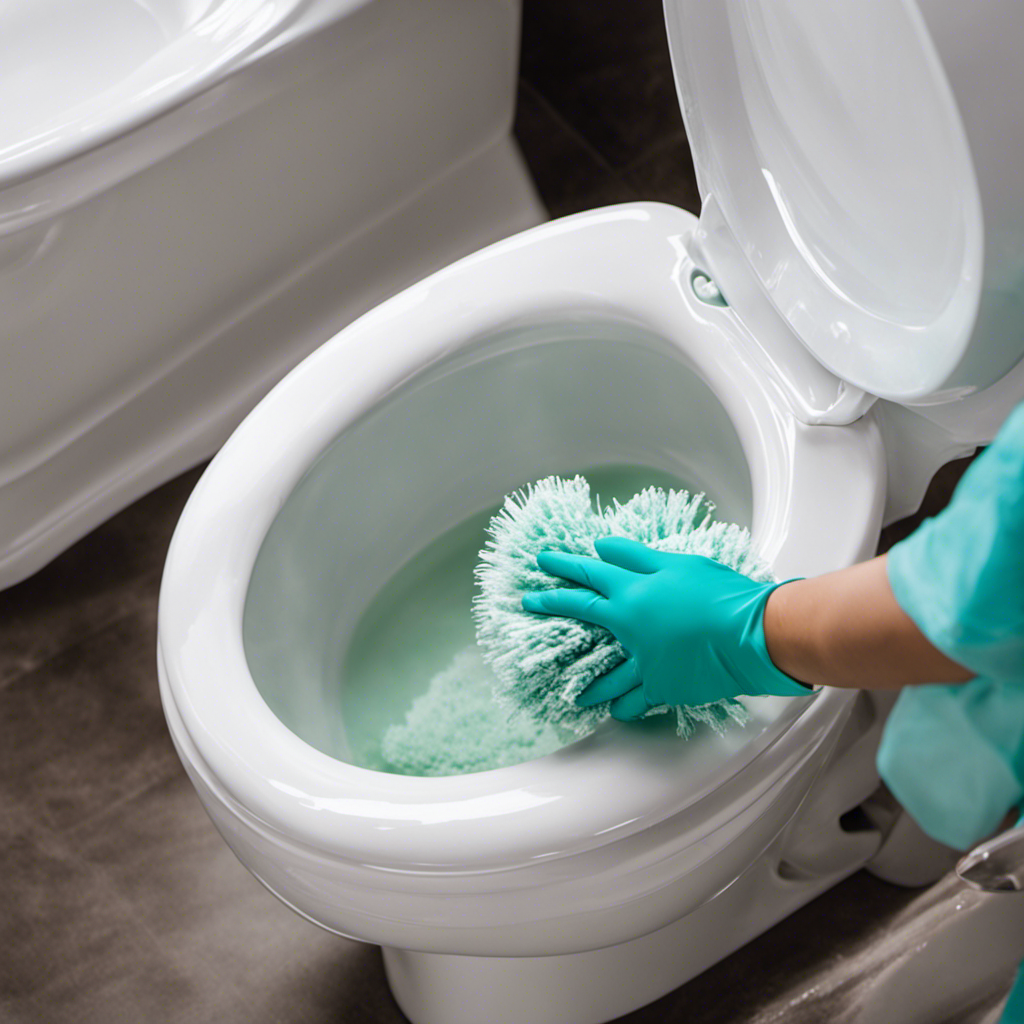Have you ever thought about what actually happens to your waste when you flush the toilet? We do it multiple times a day without really considering the destination of all that waste.
In this article, we will delve into the intricacies of the sewer system and the fascinating process of wastewater treatment. From the initial collection to the final discharge or reuse options, we will unravel the mysteries that lie beneath the surface.
Get ready to master the science behind the journey of your flush.
Key Takeaways
- Sewer systems collect sewage from various sources and regular maintenance is necessary to prevent blockages and backups.
- Wastewater is transported to a treatment plant where it undergoes primary, secondary, and tertiary treatments to remove debris, break down organic matter, and disinfect the water.
- Bacteria play a crucial role in wastewater treatment by breaking down organic matter, removing pathogens, and converting ammonia into nitrites and nitrates.
- The treated wastewater can be discharged into water bodies, but this can have negative environmental impacts. Alternatively, it can be reused for irrigation, industrial processes, and groundwater recharge, depending on regulations and sustainability considerations.
The Sewer System and Initial Collection
When we flush a toilet, the wastewater is carried away through a series of underground pipes, known as the sewer system, where it’s initially collected for further processing.

The sewer system is a crucial part of wastewater infrastructure, responsible for transporting and managing the flow of sewage from homes, businesses, and other sources. Proper sewer maintenance is essential to ensure the effective functioning of this system.
Regular inspections and cleaning of the sewer pipes help prevent blockages and backups, minimizing the risk of sewage spills and environmental contamination. Additionally, maintenance activities such as repairing damaged pipes and replacing outdated equipment contribute to the longevity and reliability of the wastewater infrastructure.
Treatment at the Wastewater Treatment Plant
After the wastewater is initially collected in the sewer system, it’s transported to a wastewater treatment plant for further processing. At the treatment plant, the wastewater undergoes a series of chemical processes to remove contaminants and improve water quality.
The first step is called primary treatment, where large debris and solids are removed through screening and sedimentation.

Next, the wastewater undergoes secondary treatment, which involves the use of biological processes to break down organic matter. This is typically done using aerobic bacteria that consume the organic material.
Finally, the water goes through tertiary treatment, which involves additional filtration and disinfection to remove any remaining impurities and pathogens.
The treated water is then released back into the environment, ensuring that it meets the required water quality standards.
Removing Solids and Debris
Once the wastewater reaches the treatment plant, we begin the process of removing solids and debris. It’s crucial to eliminate these contaminants to ensure the cleanliness and safety of the water. Here is a breakdown of how we manage toilet waste disposal and sewage management:

- Screening: The wastewater passes through screens that trap large debris like sticks, rags, and plastics. These materials are then removed and properly disposed of.
- Sedimentation: The wastewater enters large tanks where heavy solids settle to the bottom. This process, known as sedimentation, allows us to separate the sludge from the liquid.
- Filtration: To further purify the water, it undergoes filtration. Fine particles and suspended solids are removed through the use of sand, gravel, or fabric filters.
The Role of Bacteria in Wastewater Treatment
Bacteria play a crucial role in the treatment of wastewater. They are responsible for breaking down organic matter and removing harmful pathogens, thus improving water quality. In the process of wastewater treatment, bacteria undergo various biochemical processes that help remove contaminants and pollutants. These processes include aerobic and anaerobic digestion, nitrification, denitrification, and phosphorus removal.
To provide a visual representation of the important role of bacteria in wastewater treatment, here is a table that highlights some of the key biochemical processes:
| Biochemical Process | Description | Role of Bacteria |
|---|---|---|
| Aerobic digestion | Breaks down organic matter using oxygen | Bacteria convert organic matter into CO2 |
| Anaerobic digestion | Breaks down organic matter in the absence of oxygen | Bacteria produce methane gas as a byproduct |
| Nitrification | Converts ammonia into nitrites and nitrates | Bacteria convert ammonia into nitrites and nitrates |
| Denitrification | Converts nitrates back into nitrogen gas | Bacteria convert nitrates into nitrogen gas |
| Phosphorus removal | Precipitates and removes phosphorus from wastewater | Bacteria facilitate the removal of phosphorus from wastewater |
Understanding the role of bacteria in these biochemical processes is fundamental to effective wastewater treatment and ensuring the preservation of water quality.
Discharge Into the Environment or Reuse Options
We have several options for the discharge or reuse of wastewater once it has undergone the necessary treatment processes. These options include:

- Discharging the treated wastewater into nearby water bodies, such as rivers or oceans. This is a common method used by many wastewater treatment plants. However, it can have negative environmental impacts, such as the release of nutrients and chemicals that can harm aquatic life.
- Reusing the treated wastewater for irrigation purposes. This is an effective way to conserve water resources and reduce the demand for freshwater. However, it’s important to ensure that the wastewater is properly treated to remove any contaminants that could pose a risk to public health or the environment.
- Using the treated wastewater for industrial processes or non-potable uses, such as toilet flushing or cooling systems. This can help reduce the demand for freshwater and conserve resources.
It is crucial to carefully consider the disposal methods of treated wastewater to minimize its environmental impact and ensure the protection of ecosystems.
Frequently Asked Questions
How Often Should I Have My Septic Tank Pumped?
We should have our septic tank pumped every 3-5 years to ensure proper septic tank maintenance and avoid costly septic system repairs. Regular pumping removes accumulated solids and prevents overflow or blockages.
Are There Any Health Risks Associated With Wastewater Treatment Plants?
When we think about the importance of wastewater treatment, it is crucial to understand the risks of untreated wastewater. By treating wastewater properly, we can mitigate health risks and ensure a safer environment for all.
Can I Use Wastewater From the Treatment Plant for Irrigation?
Using treated wastewater for agriculture has numerous benefits, such as conserving freshwater resources and reducing the need for synthetic fertilizers. Reclaimed water, when properly treated, can be a valuable resource for irrigation.

What Happens to the Medications and Chemicals That Are Flushed Down the Toilet?
When we flush medications and chemicals down the toilet, they can end up in our waterways and harm the environment. To ensure safe disposal, proper medication take-back programs and hazardous waste disposal facilities should be utilized.
What Is the Environmental Impact of Wastewater Discharge Into Rivers or Oceans?
When we flush a toilet, wastewater goes through a series of treatment processes to remove contaminants before it is discharged into rivers or oceans. However, if not properly treated, wastewater contamination can have a detrimental impact on the marine ecosystem.
Conclusion
In conclusion, when we flush a toilet, the wastewater goes through a complex process before it’s discharged into the environment or reused.
At the wastewater treatment plant, solids and debris are removed, and bacteria play a crucial role in breaking down organic matter.

Here’s an interesting statistic: Did you know that a typical wastewater treatment plant can treat millions of gallons of wastewater per day?
It’s fascinating how our sewage is effectively managed to protect the environment and public health.










